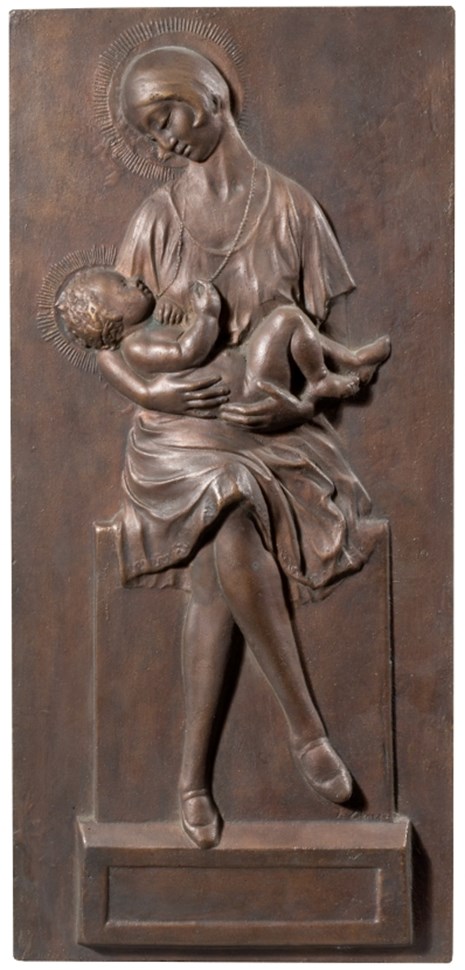This former student of St Petersburg Academy of Art was loyal to the approach to art that had been instilled in him by his professors. He was fascinated by Classical examples, and tried to follow them in his work. His way of measuring artistic achievement was the artist's ability to make a compelling rendition of natural forms and impressions. He was surprised and bewildered by his contemporaries' attempts to introduce into Lithuanian art the innovations of Western modernism. In 1928 this confusion was replaced by curiosity, and he translated one of the main motifs of Western art into contemporary language. HisModern Madonnacomes across as an iconic image of a fashionable woman in the 1920s: bobbed hair, a dress with a low waist, silk stockings, and high-heeled shoes; while the baby in the mother's lap plays with a long string of beads. The sculpture provoked quite a reaction, but there were differing opinions. The negative criticism must have had a stronger influence on him, for he subsequently returned to his earlier artistic principles. There were other Art Deco interpretations of the image of the Madonna by Lithuanian artists, specifically by the female artists Halina Naruševičiūtė-Žmuidzinienė and Sofija Pacevičienė. Their works provoked a very positive response, but these artists were not so famous, and their works were created later, in the 1930s.
Valentinas AntanavičiusArbit Blatas (Neemija Arbitblatas)Vincas DilkaVladas EidukevičiusAdomas GaldikasJonas GasiūnasVincentas GečasAntanas GudaitisKsenija JaroševaitėVytautas Kazimieras JonynasVytautas KairiūkštisGediminas KaraliusVincas KisarauskasJuozas MikėnasDeimantas NarkevičiusMindaugas NavakasViktoras PetravičiusEglė RakauskaitėFerdynand RuszczycAntanas SamuolisŠarūnas SaukaAugustinas SavickasLudomir SleńdzińskiAntanas SutkusArvydas ŠaltenisJonas ŠvažasAlgimantas ŠvėgždaGintautas TrimakasSofija VeiverytėJustinas VienožinskisJuozas ZikarasKazimiera ZimblytėAntanas Žmuidzinavičius

Juozas Zikaras. Modern Madonna. 1928


